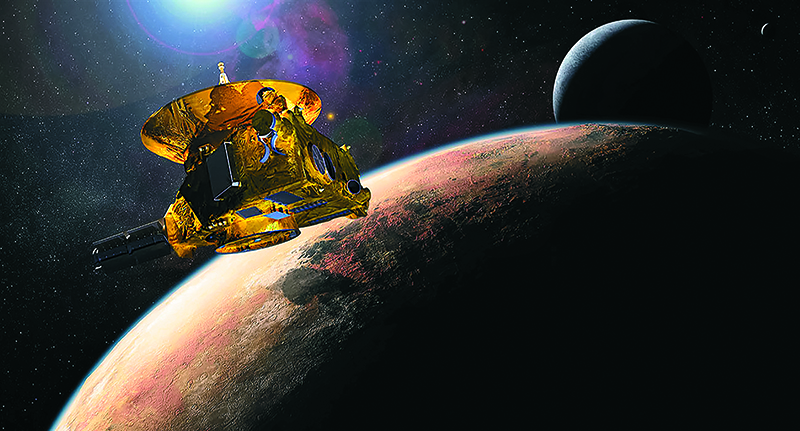
After a journey of three billion miles lasting more than nine years, NASA’s New Horizons mission closed in on Pluto and its mysterious moons in July. The craft is powered by a radioisotope thermoelectric generator (RTG) assembled, tested and prepared for launch by researchers at Idaho National Laboratory.
“Not many people have to wait 10 years for the payoff of their hard work, but it is enormously gratifying to see the close-up imagery being beamed back,” said Stephen Johnson, director of the INL Space Nuclear Power & Isotope Technologies Division. “We still have many members of our team that supported the 2006 launch working here in Idaho, and the excitement about the new discoveries is really starting to build.”
The RTG power system uses the heat from the natural decay of plutonium-238 to provide an uninterrupted and reliable source of electricity and heat for the New Horizons probe in the remote and harsh environment of deep space.
Preparing the RTG for the New Horizons mission involved almost 80 employees, including technicians, engineers, quality assurance and health physics professionals, technical writers, trainers, mechanics, electricians, and facility and project managers. Starting in 2004, they built INL’s 10,000-square-foot Space and Security Power Systems Facility (SSPSF). Then the team assembled and tested the RTG in time to make NASA’s deadline in October 2005. The SSPSF is located at INL’s Materials and Fuels Complex about 30 miles west of Idaho Falls.
The completed RTG power system was shipped to Kennedy Space Center on schedule in late October 2005. The New Horizons RTG is currently providing about 202 watts of electrical power to enable the operations of the New Horizons spacecraft and its seven science instruments. The heat generated by the radioactive decay of plutonium-238 is converted into electricity by solid-state thermoelectrics. Similar RTG power systems have been used by NASA for nearly 40 years to enable spacecraft to operate at significant distances from the sun or in environments where solar power systems are not feasible, including the moon, Mars, Jupiter, and Saturn.
New Horizons has already beamed back intriguing images of surface features on both Pluto and its largest moon, Charon. New knowledge and scientific discoveries will continue to flow from New Horizons for the next 16 months, as the bounty of data trickles back to Earth. Powered by its RTG, the long journey of New Horizons will then continue deep into the Kuiper belt – the vast region of icy objects and remnants of the formation of the solar system dating from more than 4 billion years ago.
New Horizons has reached the outer solar system in record time, and is the fastest human-made objects ever to leave Earth, traveling at more than 36,000 miles per hour. For more details on the New Horizons mission, visit www.nasa.gov.